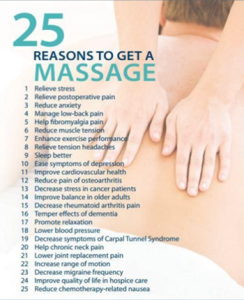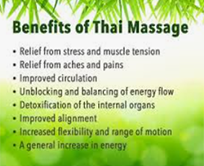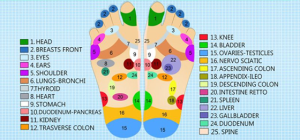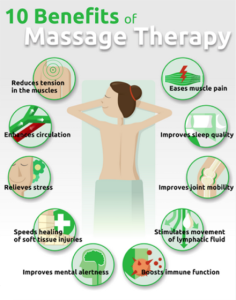Benefits of Thai Massage
Thai massage offers numerous physical, mental, and emotional benefits, including:
- Stress Relief and Relaxation
- Reduces stress and anxiety levels.
- Promotes deep relaxation and emotional balance.
- Improved Flexibility and Mobility
- Enhances joint mobility and range of motion.
- Increases muscle strength and flexibility.
- Pain Relief and Posture Improvement
- Relieves muscle tension, joint pain, and stiffness.
- Corrects posture and spinal alignment.
- Better Circulation and Energy Flow
- Stimulates blood flow and lymphatic drainage.
- Unblocks and balances energy pathways in the body.
- Boosted Immune System
- Strengthens immunity by promoting circulation and detoxification.
- peeds up recovery from injuries and fatigue.
- Mental Clarity and Emotional Healing
- Reduces brain fog and enhances focus.
- Helps manage symptoms of depression and anxiety.
- Improved Sleep Quality
- elaxes the body and mind, leading to better sleep patterns.
- Alleviates insomnia and morning fatigue.
Types of Thai Massage
Thai massage can be tailored based on individual needs and goals:
- General Wellness Massage – Focuses on relaxation and energy rebalancing to relieve stress and boost overall health.
- Therapeutic Massage – Targets specific ailments like chronic pain, muscle stiffness, and joint problems.
- Rehabilitative Massage – Aids in recovery from injuries, improves flexibility, and enhances athletic performance.
Why Choose Thai Massage?
Thai massage is not just a treatment; it is a holistic experience designed to restore harmony between the body and mind. With its ability to alleviate physical discomfort, reduce stress, and boost energy, each session leaves you feeling refreshed, recharged, and revitalized. Whether you seek relief from chronic pain, improved mobility, or simply a relaxing experience, Thai massage offers transformative benefits for your overall well-being.



Yes Thai Massage Can Reduce Pain:
 One of the biggest advantages of Thai massage is that it is extremely useful in strengthening the joints and helps the body fight against chronic joint problems. Moreover, this form of massage is highly effective in treating health troubles such as back pain, neck pain, frozen shoulder, migraines, and knee pain besides slowing down the aging process. On top of that, Thai massage helps in promoting the sense of well-being and vitality. It helps clear and calm the mind so that you can have a positive outlook towards life. Moreover, this kind of massage has the potential of relaxing the soft tissue muscles and help in reducing stress, promoting flexibility and revitalization, and drawing out excess oil and impurities from surface of the skin to promote cell rejuvenation.
One of the biggest advantages of Thai massage is that it is extremely useful in strengthening the joints and helps the body fight against chronic joint problems. Moreover, this form of massage is highly effective in treating health troubles such as back pain, neck pain, frozen shoulder, migraines, and knee pain besides slowing down the aging process. On top of that, Thai massage helps in promoting the sense of well-being and vitality. It helps clear and calm the mind so that you can have a positive outlook towards life. Moreover, this kind of massage has the potential of relaxing the soft tissue muscles and help in reducing stress, promoting flexibility and revitalization, and drawing out excess oil and impurities from surface of the skin to promote cell rejuvenation.
A study conducted in Thailand investigates the effects of traditional Thai massage on scapulocostal syndrome (SCS), a musculoskeletal pain syndrome in the posterior shoulder area. It provides evidence that Thai massage reduces pain, muscle tension, and anxiety in patients who had myofascial trigger points in the scapular region.
Twenty patients were chosen aged 18 – 50 who were experiencing “spontaneous scapular pain which lasted 12 weeks” according to the study report. The researchers were concerned with comparing the effectiveness of Thai massage to physical therapy. The patients were divided into two groups and their progress was monitored by someone who was not aware of who was receiving which treatment. Pain scales were used to monitor pain before the study began, during treatment and then long term.
 The Thai massage group received 30 minute sessions nine times over the course of three weeks around the scapular area while lying on their side. The physical therapy group received heat packs and ultrasound treatment for the same amount of time. Researchers found a significant improvement in the Thai massage group. Overall, the Thai massage group felt more satisfied. The physical therapy group did, however, notice moderate improvements in their scapular pain.
The Thai massage group received 30 minute sessions nine times over the course of three weeks around the scapular area while lying on their side. The physical therapy group received heat packs and ultrasound treatment for the same amount of time. Researchers found a significant improvement in the Thai massage group. Overall, the Thai massage group felt more satisfied. The physical therapy group did, however, notice moderate improvements in their scapular pain.